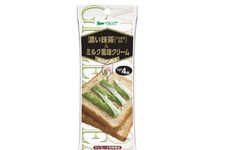



Southeast Asian dishes are referenced with tradition-inspired additives
Implications - For many consumers, traditional sauces and condiments are an excellent opportunity to begin introducing flavor profiles of Southeast Asian cuisine. Given the process of expanding one's palate, many consumers find it more accessible to first incorporate elements of the cuisine into familiar foods. This progression speaks to the cross-over influence of international cuisine, as well as the interest of consumers in expanding their palates to be more globally inclusive.
Workshop Question - What role does tradition play in your industry and how can you tap into that to communicate authenticity?
Trend Themes
1. Asian Fusion Condiments - The blending of traditional Asian flavors with all-American staples is a growing trend that offers a path for businesses to explore inventive new flavor profiles.
2. Remixed Korean Delicacies - Entrepreneurs who remix traditional Korean dishes for a new audience provide a model for updating other traditional foods for modern gastronomic palates.
3. Fermented Ketchup Condiments - Food science is catching up with traditional methods of fermenting food, offering new probiotic-infused condiments that tap into the consumer interest in healthy, gut-friendly foods.
Industry Implications
1. Condiments Industry - New artisanal and gourmet condiment lines are emerging as creators look to tap into consumers' interest in international flavors.
2. Restaurant Industry - Restaurants that specialize in traditional or fusion preparations of international cuisine are garnering strong followings.
3. Health Food Industry - Interest in probiotic and gut-friendly foods is on the rise, and new fermented condiments are providing an opportunity to meet the growing demand.

























































